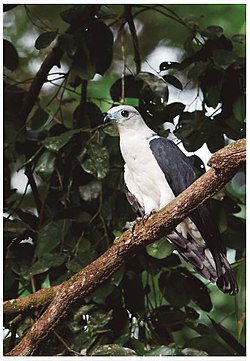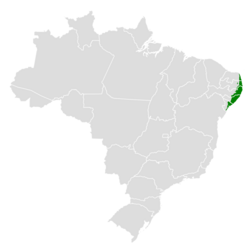| White-collared kite | |
|---|---|
 | |
| Scientific classification | |
| Kingdom: | Animalia |
| Phylum: | Chordata |
| Class: | Aves |
| Order: | Accipitriformes |
| Family: | Accipitridae |
| Genus: | Leptodon |
| Species: | L. forbesi |
| Binomial name | |
| Leptodon forbesi (Swann, 1922) | |
 | |
| White-collared kite range | |
The white-collared kite (Leptodon forbesi) is an endangered species of bird in the subfamily Perninae of the family Accipitridae, the diurnal raptors. [1] [3] [4] It is endemic to northeastern Brazil. [3]

